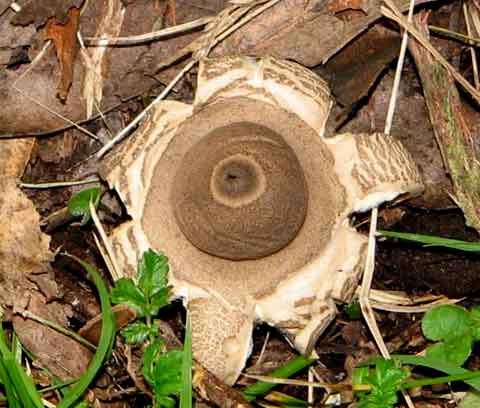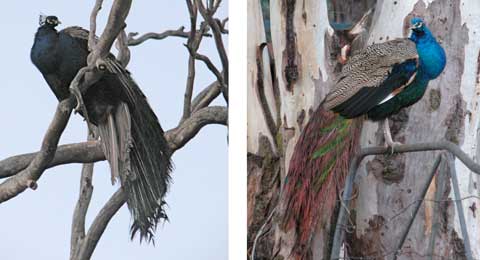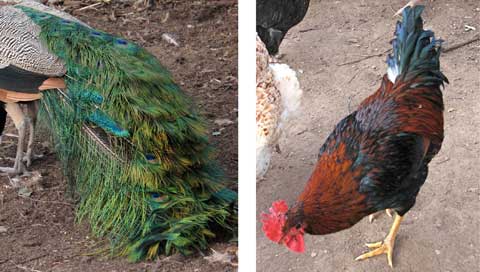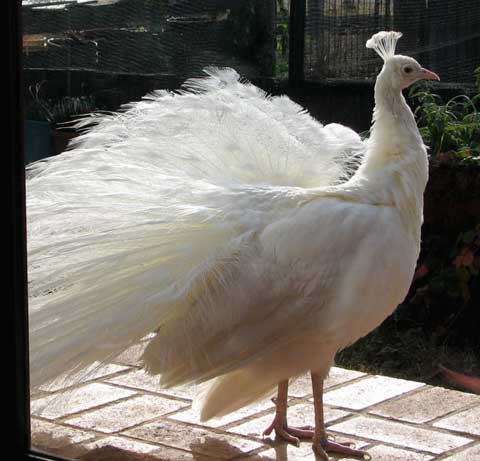A yellow Robin has appeared, flicking itself from one bush or tree or tree guard to another, more like a wind-blown leaf than a bird in flight.
It stays still in any one place for such a short time that it’s hard to get a photo of it. When it lands on the ground you only see its grey back. Usually I see one on its own but I have now spotted two at the same time, although you wouldn’t say they were together.
It appears not to have the grey throat of the illustration in my book, so although on its past seasonal visits I’ve called it a Southern Yellow Robin, now I’m not sure. Could it be a Pale Yellow Robin?
Then one time I heard it make a sound it sat on a small bare tree and went ’ ding, ding, ding, ding,ding, ding…’, non-stop, unvarying, sounding like my Thai temple bell in a stiff breeze.
The magpies and the kookaburras are still about in abundance, although, like this kooka, they get in a huff at all the windy weather we’ve been having. I love the way to kookas go all punk and fluffily fat to keep warm.
Of course the most envied critters here on cold wintry days are the pouched babies…
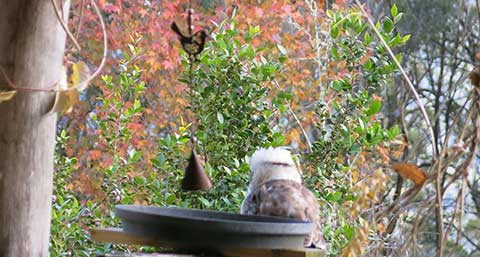
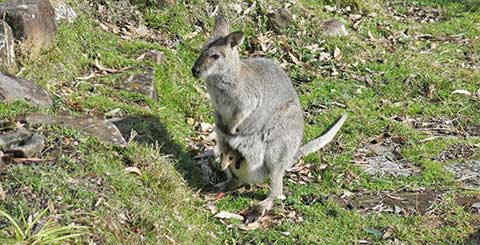
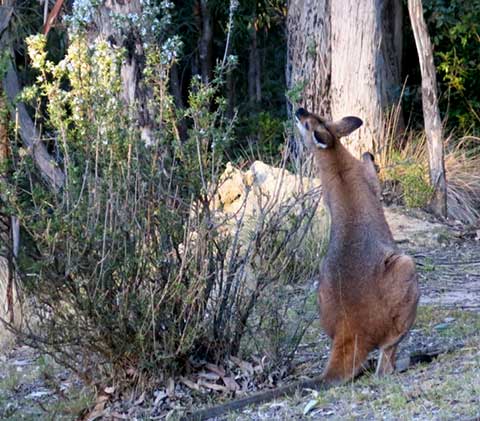
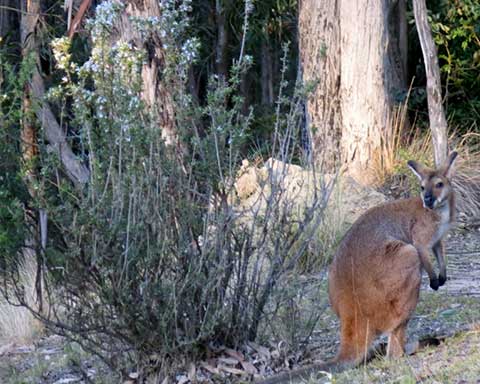
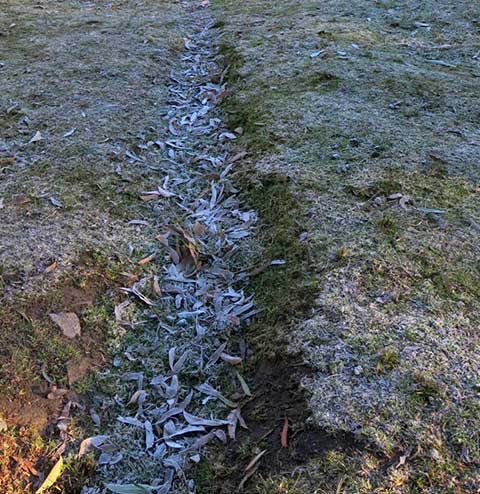
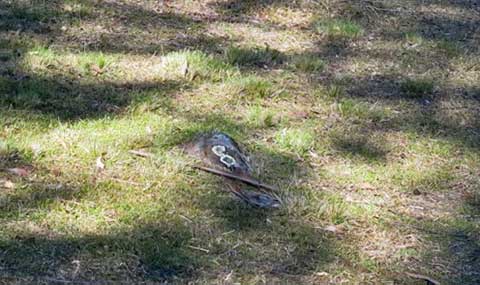
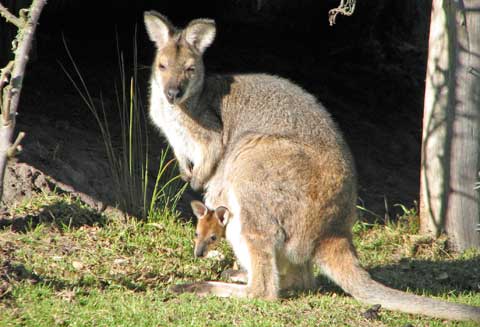
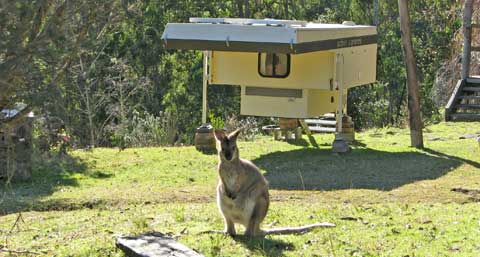
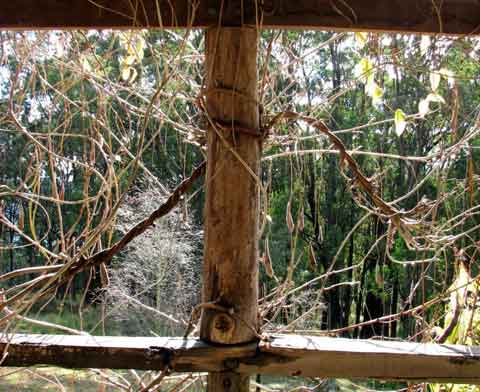
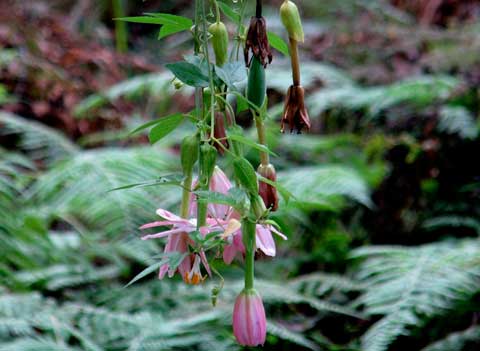

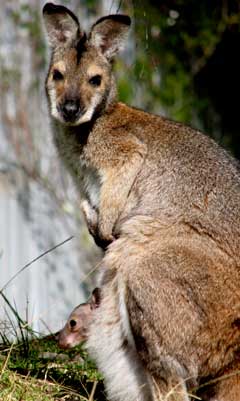 We all know how mothers have to be on the ball to keep an eye on the young. This was borne home to me afresh by my wallaby mates lately.
We all know how mothers have to be on the ball to keep an eye on the young. This was borne home to me afresh by my wallaby mates lately.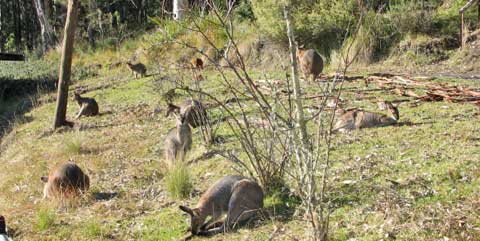
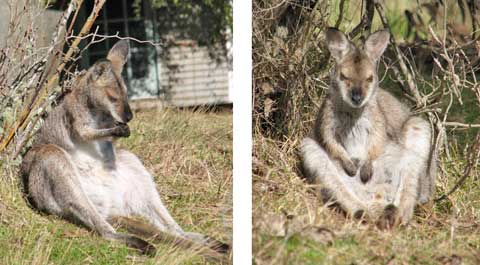
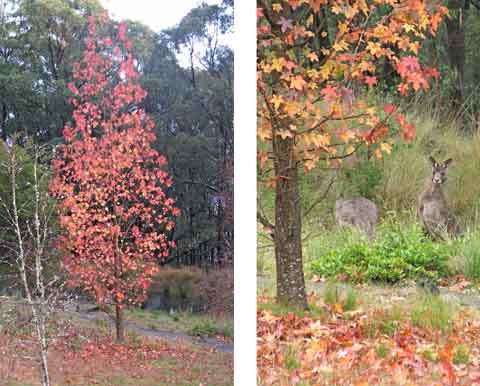
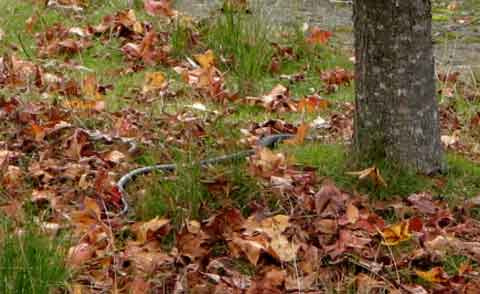
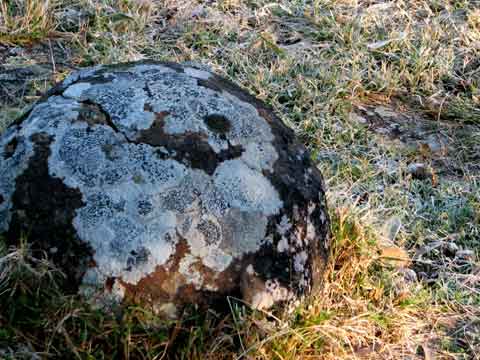
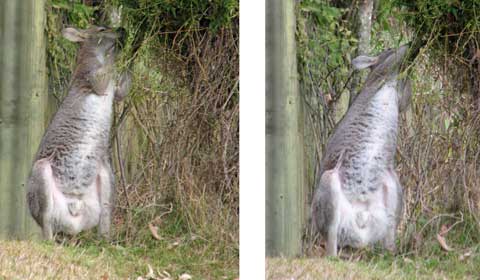
 As the cold windy weather kept me indoors more, and with an unresolved writing project requiring distraction from mounting anxiety about it, I dug out the craft paints bought long ago — for a rainy day project. They’d been on a sale table somewhere; some were metallic, and colours were limited.
As the cold windy weather kept me indoors more, and with an unresolved writing project requiring distraction from mounting anxiety about it, I dug out the craft paints bought long ago — for a rainy day project. They’d been on a sale table somewhere; some were metallic, and colours were limited.